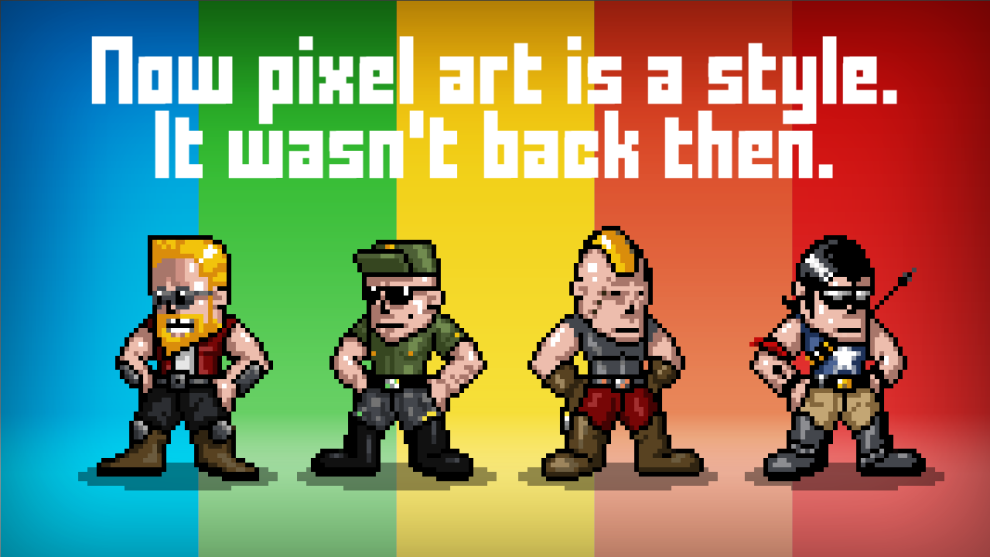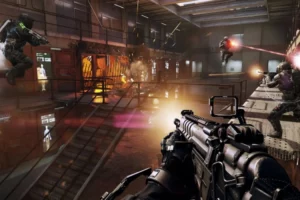In the era of hyper-realistic graphics and sprawling open worlds, a surprising trend is blooming: the resurgence of pixel art in game development. These charmingly chunky characters and vibrant, blocky landscapes, reminiscent of the golden age of 8-bit and 16-bit gaming, are captivating audiences anew. Let’s dive into the reasons behind this pixelated renaissance:
Nostalgia & Charm
For many gamers, pixel art evokes a wave of warm nostalgia, pulling them back to childhood hours spent glued to consoles. The simple visuals exude a unique charm, inviting a sense of playfulness and imagination. Pixelated worlds feel handcrafted, personal, and full of character, a stark contrast to the often sterile photorealism of modern games.
Technical Advantages
Beyond nostalgia, pixel art offers practical advantages. It’s less resource-intensive, allowing indie developers to create stunning visuals without requiring high-end hardware or vast budgets. This democratizes game development, making it more accessible to smaller studios and passionate individuals. Additionally, pixel art scales beautifully, ensuring crisp visuals on a variety of platforms, from mobile devices to high-resolution monitors.
Timeless Aesthetics
Unlike their 3D counterparts, pixel art visuals aren’t prone to aging. They transcend hardware limitations and trends, remaining charming and expressive regardless of technological advancements. This timeless quality ensures that games with well-crafted pixel art can remain visually appealing for decades to come.
Emphasis on Gameplay
Pixel art often forces developers to focus on core gameplay mechanics and storytelling, as intricate details rely on creativity and clever design rather than raw graphical power. This focus on pure gameplay can result in deeply engaging experiences that prioritize fun and innovation over visual spectacle.
Modern Reinvention
Modern pixel art isn’t simply a throwback to the past. Developers are pushing the boundaries of the style, incorporating high-resolution palettes, dynamic lighting, and even 3D elements to create visually stunning and expressive worlds. This fresh take on a classic aesthetic breathes new life into the genre, attracting both veteran and new players.

The Pixelated Future
The resurgence of pixel art isn’t just a fleeting trend; it’s a testament to the enduring appeal of simple, expressive visuals and engaging gameplay. As technology advances, expect to see pixel art continue to evolve, blending seamlessly with modern techniques to create captivating and innovative gaming experiences. So, next time you see a game boasting charming pixelated world, remember – sometimes, the greatest adventures come in the smallest packages.
Pixel art offers a unique charm and nostalgia that appeals to gamers of all ages. The style is also technically advantageous for developers, allowing small studios to create beautiful games without big budgets. Additionally, pixel art transcends technological limitations, ensuring timeless aesthetics for decades to come.
Modern pixel art also reinvents the retro style in stunning new ways. Developers incorporate lighting, high-res elements, and other modern techniques to push the genre forward. This innovating helps pixel art remain relevant and exciting in the modern gaming landscape.
For all these reasons, pixel art should have a bright future in gaming. As long as developers continue blending retro charm with modern innovation, pixelated adventures will captivate players for years to come.
Key Reasons Behind the Pixel Art Renaissance
- Powerful nostalgia & timeless aesthetic charm
- Technical advantages like scalability and low barriers to entry
- Emphasis on pure, engaging gameplay over graphics
- Modern reinvention with new techniques like 3D and lighting
- Enduring retro appeal combined with innovative new approaches
Developers Embracing the Pixel Art Revival
Many talented indie developers are embracing pixel art’s retro roots while reinventing the style in clever modern ways. Below are some noteworthy examples:
- Stardew Valley – Captures pastoral charm with its cute pixelated farming adventure
- Hyper Light Drifter – Neon-soaked dark fantasy action-RPG with fluid animations
- Dead Cells – Rogue-lite with immersive, interconnected pixelated world
- Shovel Knight – Nails 8-bit nostalgia but adds lighting, parallax, resolution enhancements
- Owlboy – Hand-drawn pixel style brings charm and emotional moments
Tips for Implementing Pixel Art in Your Game
Want to incorporate pixel art into your own game? Here are some best practices:
- Study classic pixel art techniques but don’t just copy – innovate
- Choose a manageable resolution and scale intelligently
- Use color palettes strategically to set mood and style
- Animate with care to bring your pixel world to life fluidly
- Blend retro pixel charm with modern lighting, particles, or 3D techniques
The Future of Pixel Art Gaming
Pixel art’s reemergence proves old-school visual styles remain compelling in modern gaming. As technology progresses, developers will likely keep reinventing pixel art in new contexts.
Perhaps pixel worlds will incorporate virtual/augmented reality for an immersive retro experience. Machine learning might also assist artists in efficiently generating massive pixel art environments. And on mobile devices, the scalability of pixel art opens worlds of possibility.
Through it all, well-crafted pixel art preserves its handmade personality. Increasingly realistic graphics can’t replace the imagination pixel art ignites. The style distills gaming to its essence – gameplay, story, and fun. This purity and charm will drive pixel art’s popularity for decades hence.
So next time you boot up a pixelated adventure, appreciate both its nostalgic retro roots and innovative modern incarnation. Pixel art isn’t just the past – it’s the future.
















Add Comment